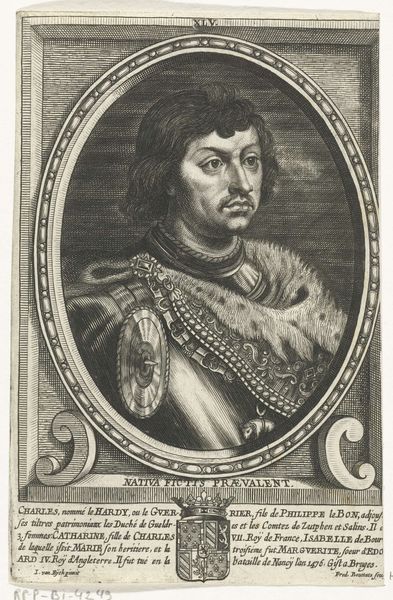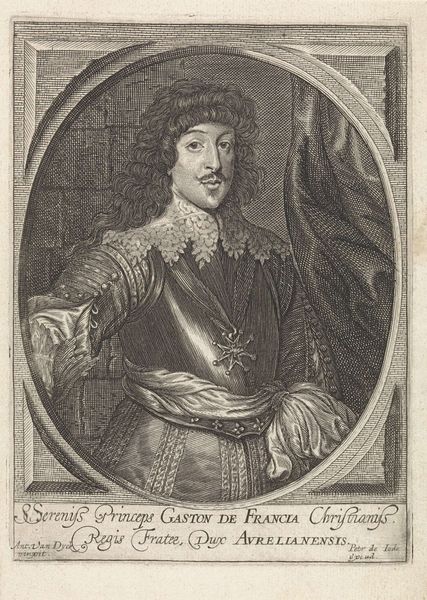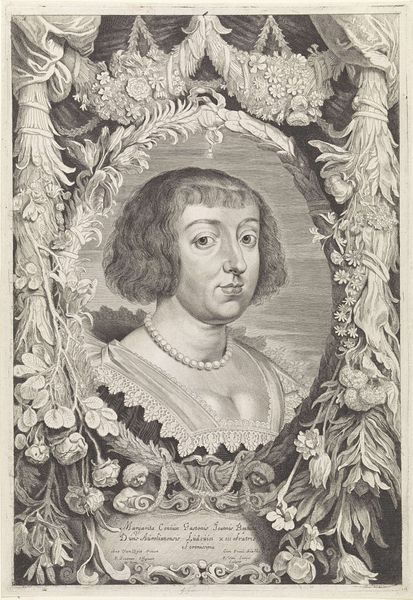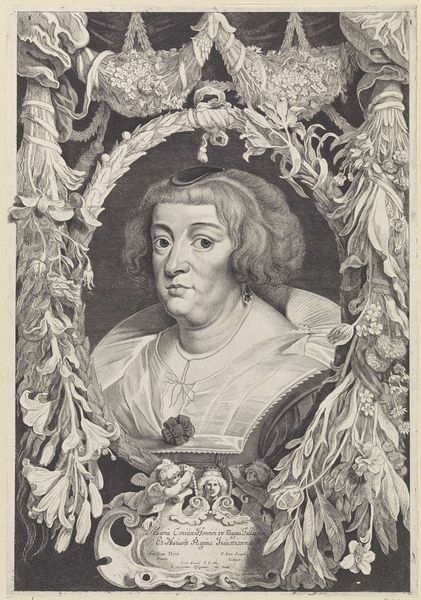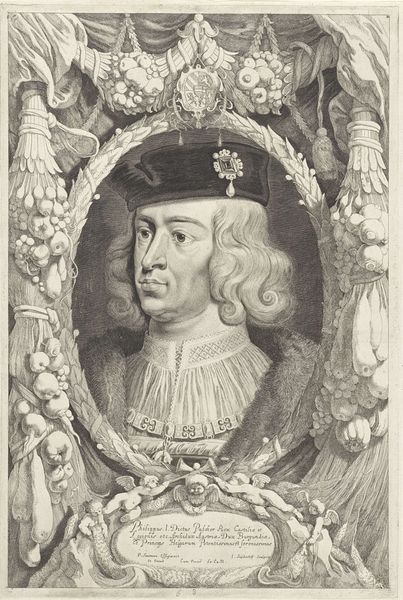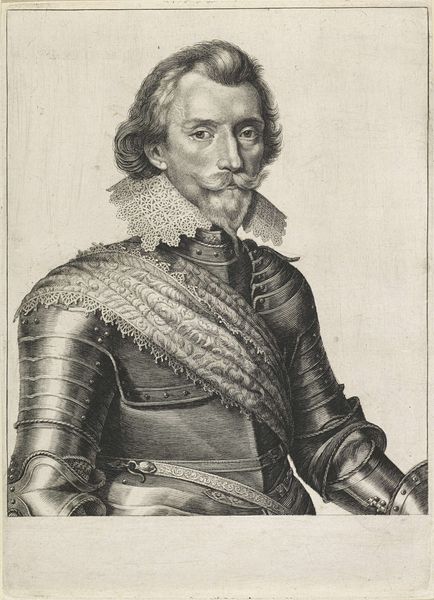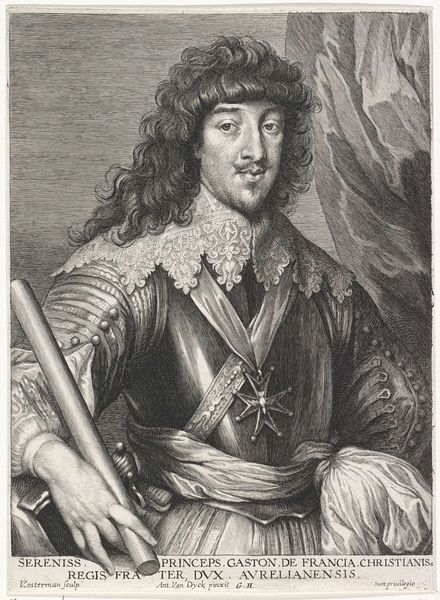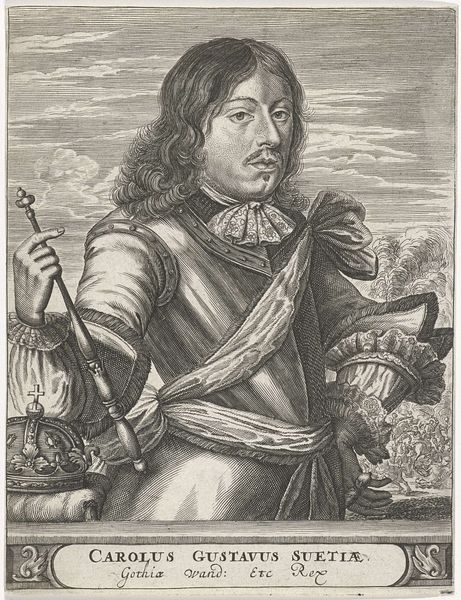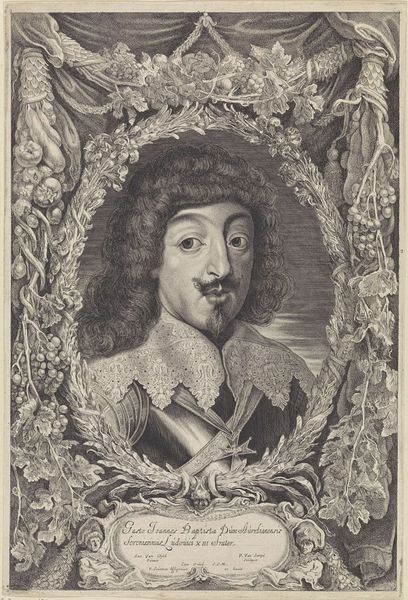
print, engraving
#
portrait
#
baroque
# print
#
old engraving style
#
figuration
#
form
#
highly detailed
#
limited contrast and shading
#
line
#
history-painting
#
engraving
#
realism
Dimensions: height 406 mm, width 270 mm
Copyright: Rijks Museum: Open Domain
Curator: Here we have Jonas Suyderhoef’s “Portret van Karel de Stoute, hertog van Bourgondië,” an engraving dating from between 1644 and 1650. What's your take as you first view it? Editor: Oh, immediately I feel a kind of austere, theatrical presence. It’s dramatic, with all the Baroque flourish around the figure, but the Duke himself has this incredibly intense and almost…melancholy gaze. It’s as if he knows something we don't. Curator: The drama is certainly deliberate. Portrait engravings like this served important functions. They circulated images of power, reinforcing status and lineage, particularly amongst elite circles. Think of it as social media before…well, media. Editor: A slightly severe Instagram! I see what you mean. And those meticulously etched details—the fur, the jewelry—it’s like they're showcasing his worth. Is that carriage wheel a hint at his power and holdings? Curator: Exactly. Everything is carefully curated to project an image of strength, nobility and legitimate rule. But it’s also worth considering the historical context: these images helped cement historical narratives. Suyderhoef is reminding viewers of Charles's importance in Burgundian history, generations later. Editor: But did he *feel* like this to the people? The portrait conveys such an isolated and slightly humorless air. It is fascinating how he might have been entirely different in real life and only seemed to become a grand duke of melancholia in retrospect. Curator: I suspect that everyday sentiment rarely entered into the process. Engravings like this were part of constructing public memory. He becomes not a man, but an idea—an ancestor figure legitimizing the present. Editor: I guess so! And looking at it now, removed from that original context, I find myself wondering about the real man behind the pomp and circumstance, maybe feeling something he didn’t even want portrayed. The enduring paradox of art, perhaps. Curator: Indeed. An artifact of power then, an object of curiosity now. A testament to both the subject and the systems of representation that shape how we perceive them across centuries.
Comments
No comments
Be the first to comment and join the conversation on the ultimate creative platform.
